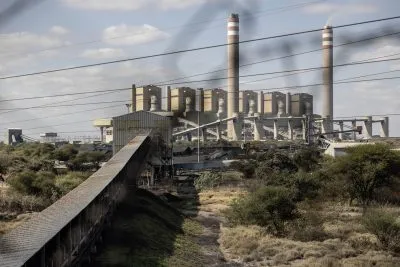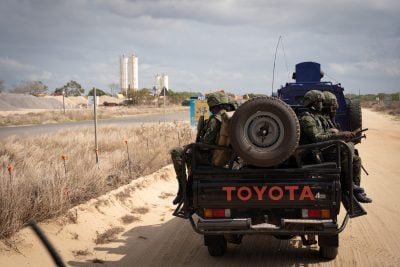Following a series of sensational headlines and footage in recent months of lions escaping Nairobi National Park, attacking citizens and being put down by authorities, there are questions over what the future holds for the urban sanctuary.
Though small by African standards, Kenya’s Nairobi National Park – unique for being part of a metropolis – is a leading tourist attraction.
Established by British settlers in 1946, the park remained largely free from encroachment, and retained its original acreage – until now. Rapid urbanisation and infrastructure development are putting this landmark under unprecedented pressure.
Approximately four miles south of the park, which sits on 28,963 acres of land, a cloud of dust rises as earth-moving equipment and lorries turn vast dry grasslands into a winding railroad. A new standard gauge railway (SGR) is being built right through the park, a reflection of the economic transformation reshaping cities across the continent. Added to this is the construction of a bypass that is meant to ease congestion in the city centre. Combined, the two developments have hived off more than 300 acres of the animal sanctuary. Meanwhile, on another side of the park, high-rise residential buildings are going up.
East Africa’s oldest national park is at a historic crossroads.
Escalating tension
Unsurprisingly, this economic activity has intensified lingering tension between human and wild habitats. For years, wild animals have migrated out of the park into nearby fields and homesteads, causing damage to life and property.
Things have escalated. In February for instance, a lioness and her two cubs, as well as two other lions were reported to have escaped the park. Kenya Wildlife Service (KWS) officials said they had recaptured two lions. The remaining lions are said to have returned to the park “on their own volition.” On 12th April 2015, another lion was spotted in the nearby
Karen suburb. The trend continues unabated, despite reassurances from KWS officials.
Two more lions that escaped the park earlier this year were shot down on the premise of threatening human life. Their shooting sparked outcry from conservationist groups, while a section of the population called for lasting measures to mitigate the problem, even if it meant relocating the park.
Fenced on three sides (the southern part that pours into the nearby Athi Kapiti grasslands is unfenced) the park has long provided a lifeline for its flora and fauna. According to KWS, it shelters 39 lions and 90 rhinos, as well as buffaloes and leopards. It hosts 80 species of mammals, 450 species of birds, 40 different amphibians and reptiles and 500 species of tree.
Economic contribution
Yet its significance goes well beyond its biodiversity. In terms of income generation, Nairobi National Park is one of the reasons behind the city’s growing economic fortunes.
The World Tourism Council estimates that tourism contributed close to 15% of Kenya’s GDP in 2015, accounting for almost 5% of employment. A big chunk of the money comes from national parks and game reserves, of which there are now over 50 across the country. As the institution managing all these parks, KWS accounts for about 90% of safari tourism in Kenya, translating to 75% of total tourism earnings.
This economic contribution could now be under threat, with continued real estate and infrastructure encroachign on the land. Will the iconic park survive?
“Nairobi National Park is here to stay,” insists Paul Gathitu of the KWS, dissipating any idea of park relocation as untenable.
Others have doubts. Philip Muruthi, chief scientist at conservation group African Wildlife Foundation, says continued rise in human population around the park is detrimental to its growth. He says that most wild animals “like quiet areas”, perhaps shedding some light on what could have triggered the recent escape of lions from the park.
KWS is taking action, and says it has asked industries around the park to minimise water pollution. Communities living around the park have also been told to stop interfering with the fence.
To strike a balance between development and conservation, KWS also requested that the railway be raised within the park to ensure that animals can move freely once construction activities are over.
But is this enough? Muruthi argues that a long-term solution must be found sooner than later if this park, and others like it, are to remain commercially viable. But before this is done, he says, non-compatible development such as construction of roads in the area should be avoided, and encroachment banned.
KWS’s Gathitu says the solution must involve working with communities around the park to ensure coexistence between people and wild animals.
The future of conservation
This is already playing out in Narok county, 150km away from the bustling city and its park, where locals are profiting from a world acclaimed model of private conservation called eco-conservation.
Established in 2010 by BaseCamp Explorer, local community and other partners, Mara Naboisho Conservancy aims to conserve the biological resources and the socio-cultural heritage of the area, including land, wildlife and people, through a community conservation approach and responsible tourism practices. Spanning a total of 50,000 acres the conservancy’s land was contributed by over 500 Maasai landowners who earn a direct income from it.
Naboisho “brings together community and wildlife conservation to make better places to live in and great places to visit,” says Jeremiah Mutisya, the chief executive of Basecamp Explorer.
With more than 70 identified lions, Naboisho is now believed to have one of the highest lion densities in Africa and is home to over 220 recorded bird species.
Mutisya adds that eco-conservancy is a way of enhancing wildlife conservation outside protected areas. This involves the creation of conservancies, where areas with known lion populations are turned into semi-protected areas in which the number of human settlements and livestock herds are managed in a way that maintains a sustainable balance.
Could such efforts form the basis of a model that will, among others, ensure the future of Nairobi National Park?
Mutisya has no doubt, saying, “This is the future of conservation in Africa.”
Amos Wachira
Want to continue reading? Subscribe today.
You've read all your free articles for this month! Subscribe now to enjoy full access to our content.
Digital Monthly
£8.00 / month
Receive full unlimited access to our articles, opinions, podcasts and more.
Digital Yearly
£70.00 / year
Our best value offer - save £26 and gain access to all of our digital content for an entire year!
 Sign in with Google
Sign in with Google 


